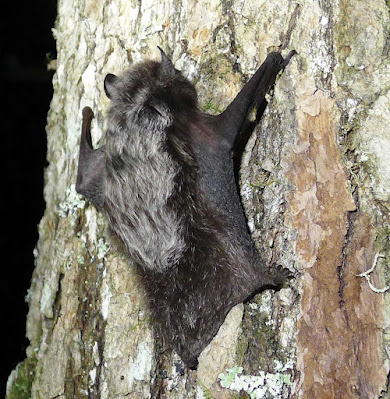Animal Life - Bats
I met a silver-haired bat once and I just kind of fell in love. He had a cute face and the fur is so soft. It piqued an interest in me. Over the weekend I attended a bat chat through the Nevada Department of Wildlife and The Nature Conservancy of Nevada.
There's a bridge over the Truckee River that becomes home to Brazilian free-tailed bats during the summer. They come to give birth so by August-September, when the pups are able to fly as well, the burst at dusk is something to see, and I look forward to it.
There are 23 species of bats in Nevada, and while not the most for a state, it is the most diverse. Of those, only the spotted bat is considered threatened, but numbers are declining in several species due to habitat destruction and hibernation disruption.
The silver-haired bat, for example, will often hibernate between sections of tree bark, which is also where they roost.
The Nevada Bat Working Group put together the first bat conservation plan in the Western US, outlining the life history of each species and conservation measures for certain habitats and water, including bridge construction.
The Western Pipistrelle bat is one of the smallest in the country as well as the slowest and weakest in flight. Whereas the pallid bat has enough size and strength to pick up scorpions from the ground.
Here is some FYI if you come across a bat outside or in your home.




Comments
Post a Comment